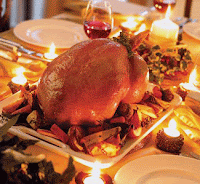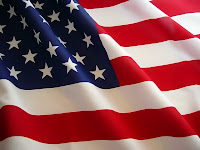Health Care and Thanksgiving in 2015
It’s that time of year that families gather together to celebrate and give thanks for all their blessings, and look forward to spending time around a table laden with bountiful food and drink. Thanksgiving is a uniquely American holiday, and it has been celebrated in one form or fashion since the Pilgrims made nice with the Native American Indians in the 1620’s. About 400 years of togetherness sometimes has its benefits, and sometimes not.
According to the History Channel, in November 1621, after the Pilgrims’ first corn harvest proved successful, Governor William Bradford organized a celebratory feast and invited a group of the fledgling colony’s Native American allies, including the Wampanoag chief Massasoit. Now remembered as American’s “first Thanksgiving”—although the Pilgrims themselves may not have used the term at the time—the festival lasted for three days.
While no record exists of the historic banquet’s exact menu, the Pilgrim chronicler Edward Winslow wrote in his journal that Governor Bradford sent four men on a “fowling” mission in preparation for the event, and that the Wampanoag guests arrived bearing five deer. Historians have suggested that many of the dishes were likely prepared using traditional Native American spices and cooking methods.
Because the Pilgrims had no oven and the Mayflower’s sugar supply had dwindled by the fall of 1621, the meal did not feature pies, cakes or other desserts, which have become a hallmark of contemporary celebrations. For a lot of detail about the history of this holiday, go to this site: http://www.history.com/topics/thanksgiving/history-of-thanksgiving.
One major component that is part of Thanksgiving is the food. People get in a festive mood and begin preparing days in advance for the main feast of the holiday, and other meals leading up to it as well as afterwards—it is a major event. The Food Network has some incredible ways to you to make your guests feel as though they’ve dined and experienced Nirvana. Here is your path to gourmet victory: http://www.foodnetwork.com/thanksgiving.html.
Additionally, as if that’s not enough, the New York Times has a significant Thanksgiving food “How To” cooking guide that shows every neophyte baker or aspiring gourmand the best way to prepare about any dish you wish: http://cooking.nytimes.com/thanksgiving. And Southern Living Magazine displays every possible Thanksgiving side dish you could want: http://www.southernliving.com/food/holidays-occasions/thanksgiving-dinner-side-dishes.
As well, there are parades and football games to watch on the big screen television or on your electronic devices. Thanksgiving Day parades are held in some cities and towns on or around Thanksgiving Day. Some parades or festivities also mark the opening of the Christmas shopping season. Some people have a four-day weekend so it is a popular time for trips and to visit family and friends.
Most government offices, businesses, schools and other organizations are closed on Thanksgiving Day. Many offices and businesses allow staff to have a four-day weekend so these offices and businesses are also closed on the Friday after Thanksgiving Day. Public transit systems do not usually operate on their regular timetables. Thanksgiving Day it is one of the busiest periods for travel in the USA. This can cause congestion and overcrowding. Seasonal parades and busy football games can cause disruption to local traffic. More information about what goes on in America is found at this website: http://www.timeanddate.com/holidays/us/thanksgiving-day.
Thanksgiving is one of the busiest travel seasons of the year, with tens of millions of people flying, driving and headed out of town. For some the journey is short, and for others it’s a major travel event. The American Red Cross provides very helpful advice if you’re bustling the family off to Grandma’s house for the holiday: http://www.redcross.org/news/article/Travel-Safety-Tips-for-Thanksgiving-Travelers.
And, you’ll especially want to be careful about fire safety during this holiday, whether in the kitchen when preparing meals or in the home when having a fire in the family den fireplace. ABC News has some great advice: http://abcnews.go.com/blogs/lifestyle/2014/11/5-fire-safety-tips-to-keep-in-mind-this-thanksgiving/.
Even though Thanksgiving is celebrated as a wonderful day and season of giving thanks for all your blessings, there are some safety precautions you should take to ensure that your celebration doesn’t get derailed.
Turkey safety—the turkey is the biggest star. Make sure he evokes a round of applause—not a round of visits to the bathroom or, worse, the hospital.
Buy carefully.
· Avoid fresh, stuffed turkeys; buy your turkey at least 1-2 days before you cook it, and keep it in the fridge; keep it in the freezer if you’ve bought it earlier.
Defrost properly.
· Thaw in the refrigerator (every 4-5 lbs. needs one day to thaw).
· Submerge the turkey (wrapped in leak-proof packaging) in cold water (every 1 lb. needs 30 minutes to thaw) that should be changed every half hour.
· Microwave in a microwave-safe pan, removing any packaging and following the manufacturer’s instructions.
Cook immediately after thawing.
· Avoid slow cooking or partially cooking the turkey.
· At 165 degrees F at least.
· Opt to cook the stuffing separately.
Use a thermometeron the innermost part of the thigh and wing, as well as the thickest portion of the breast, to ensure that the turkey is well cooked.
· Don’t carve at once; give the juices time (20 min.) to settle.
· Keep Clean!
· Wash your hands with soap and water before and after handling food.
· Keep all surfaces and utensils clean.
· Never handle cooked and raw food together, in order to avoid cross-contamination.
· Keep raw meat away from vegetables or other uncooked food.
The Thanksgiving dinner should be fun and festive, not fearful and dangerous. A significant amount of safety information about all things Thanksgiving is found at this website: http://www.atlantictraining.com/safety-tips/thanksgiving-safety-tips.php. As well, the CDC has some safety tips for you to follow about food prep: http://www.cdc.gov/features/turkeytime/.
Also, according to the ASPCA, Thanksgiving is a time for friends, family and holiday feasts—but also a time for possible distress for our animal companions. Pets won’t be so thankful if they munch on undercooked turkey or a pet-unfriendly floral arrangement, or if they stumble upon an unattended alcoholic drink. Check out the following tips for a fulfilling Thanksgiving that your pets can enjoy, too, at this website: https://www.aspca.org/pet-care/general-pet-care/thanksgiving-safety-tips.
Overall, Thanksgiving is a time to celebrate your blessings and be thankful for all you have. Take time to remember what and who are important, and say a simple prayer to Him for that which provides the real reason you can give thanks.
Until next time.




Comments
Post a Comment